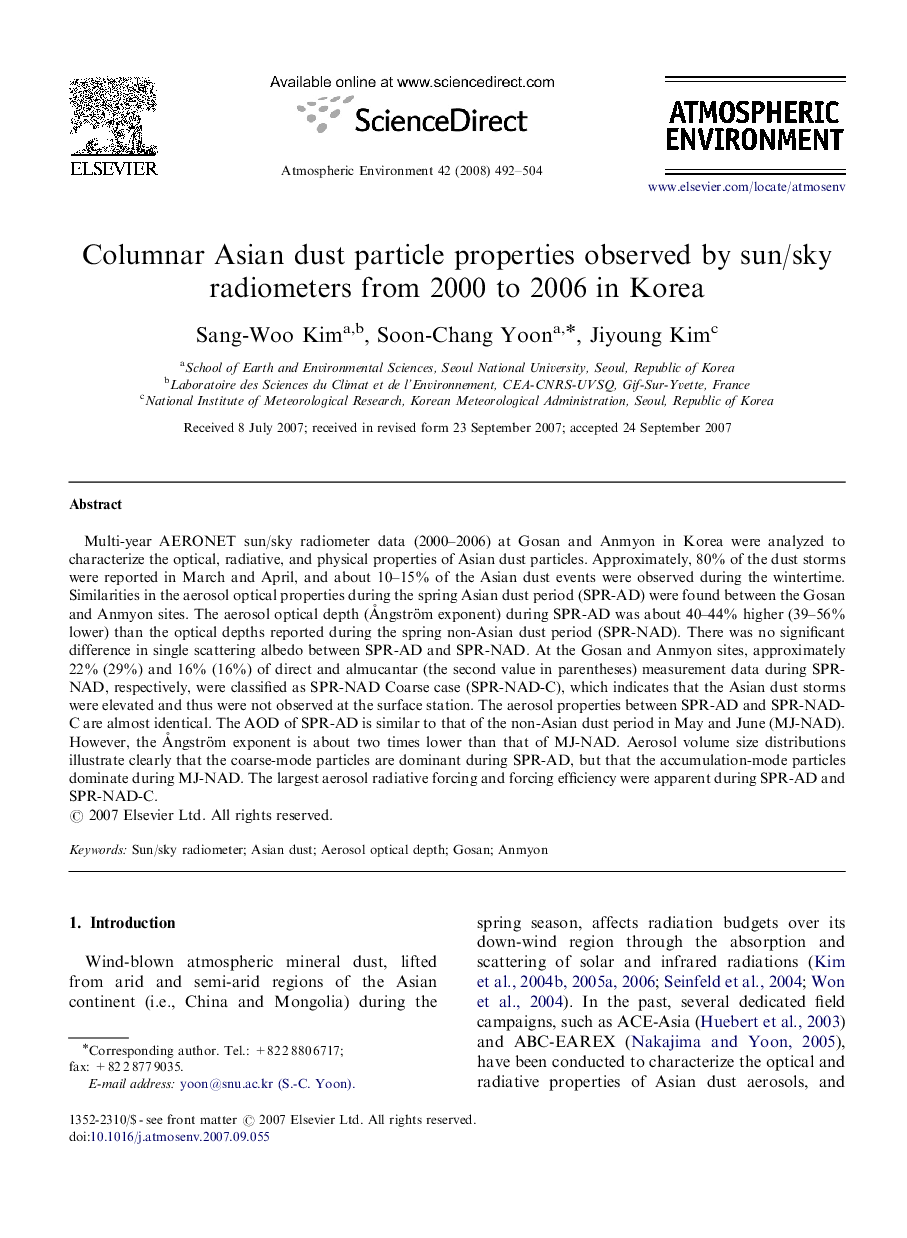| Article ID | Journal | Published Year | Pages | File Type |
|---|---|---|---|---|
| 4442853 | Atmospheric Environment | 2008 | 13 Pages |
Multi-year AERONET sun/sky radiometer data (2000–2006) at Gosan and Anmyon in Korea were analyzed to characterize the optical, radiative, and physical properties of Asian dust particles. Approximately, 80% of the dust storms were reported in March and April, and about 10–15% of the Asian dust events were observed during the wintertime. Similarities in the aerosol optical properties during the spring Asian dust period (SPR-AD) were found between the Gosan and Anmyon sites. The aerosol optical depth (Ångström exponent) during SPR-AD was about 40–44% higher (39–56% lower) than the optical depths reported during the spring non-Asian dust period (SPR-NAD). There was no significant difference in single scattering albedo between SPR-AD and SPR-NAD. At the Gosan and Anmyon sites, approximately 22% (29%) and 16% (16%) of direct and almucantar (the second value in parentheses) measurement data during SPR-NAD, respectively, were classified as SPR-NAD Coarse case (SPR-NAD-C), which indicates that the Asian dust storms were elevated and thus were not observed at the surface station. The aerosol properties between SPR-AD and SPR-NAD-C are almost identical. The AOD of SPR-AD is similar to that of the non-Asian dust period in May and June (MJ-NAD). However, the Ångström exponent is about two times lower than that of MJ-NAD. Aerosol volume size distributions illustrate clearly that the coarse-mode particles are dominant during SPR-AD, but that the accumulation-mode particles dominate during MJ-NAD. The largest aerosol radiative forcing and forcing efficiency were apparent during SPR-AD and SPR-NAD-C.
